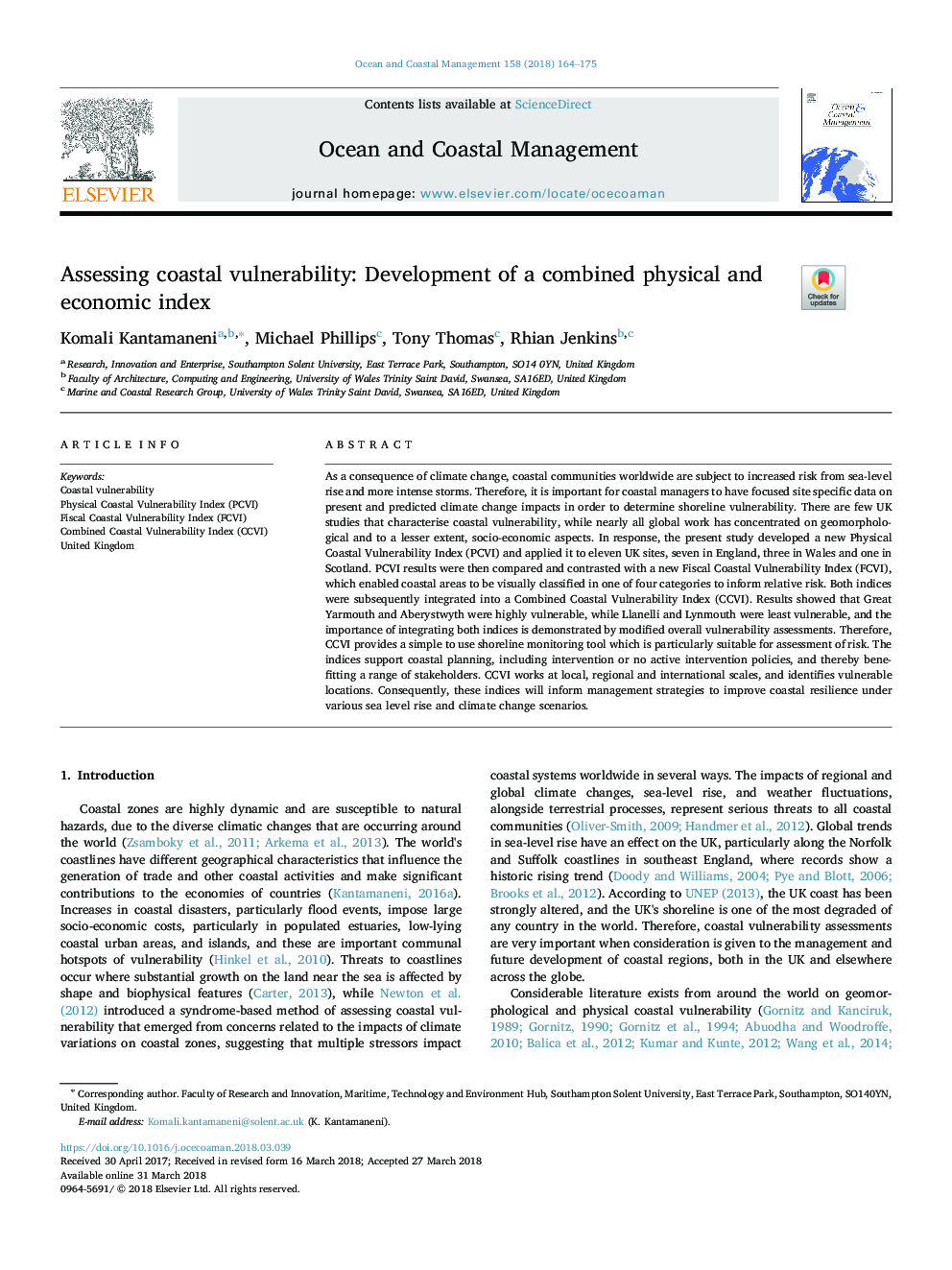| Article ID | Journal | Published Year | Pages | File Type |
|---|---|---|---|---|
| 8060701 | Ocean & Coastal Management | 2018 | 12 Pages |
Abstract
As a consequence of climate change, coastal communities worldwide are subject to increased risk from sea-level rise and more intense storms. Therefore, it is important for coastal managers to have focused site specific data on present and predicted climate change impacts in order to determine shoreline vulnerability. There are few UK studies that characterise coastal vulnerability, while nearly all global work has concentrated on geomorphological and to a lesser extent, socio-economic aspects. In response, the present study developed a new Physical Coastal Vulnerability Index (PCVI) and applied it to eleven UK sites, seven in England, three in Wales and one in Scotland. PCVI results were then compared and contrasted with a new Fiscal Coastal Vulnerability Index (FCVI), which enabled coastal areas to be visually classified in one of four categories to inform relative risk. Both indices were subsequently integrated into a Combined Coastal Vulnerability Index (CCVI). Results showed that Great Yarmouth and Aberystwyth were highly vulnerable, while Llanelli and Lynmouth were least vulnerable, and the importance of integrating both indices is demonstrated by modified overall vulnerability assessments. Therefore, CCVI provides a simple to use shoreline monitoring tool which is particularly suitable for assessment of risk. The indices support coastal planning, including intervention or no active intervention policies, and thereby benefitting a range of stakeholders. CCVI works at local, regional and international scales, and identifies vulnerable locations. Consequently, these indices will inform management strategies to improve coastal resilience under various sea level rise and climate change scenarios.
Keywords
Related Topics
Physical Sciences and Engineering
Earth and Planetary Sciences
Oceanography
Authors
Komali Kantamaneni, Michael Phillips, Tony Thomas, Rhian Jenkins,
